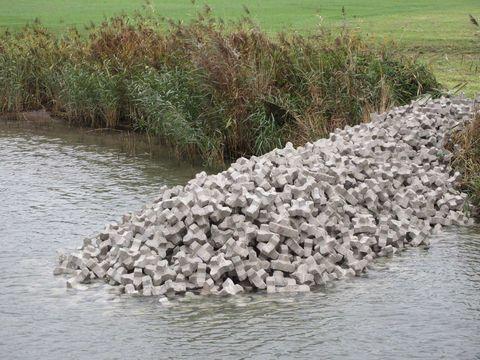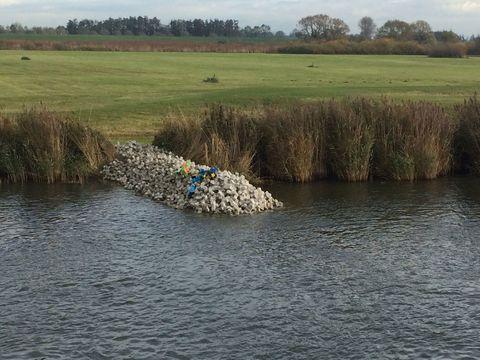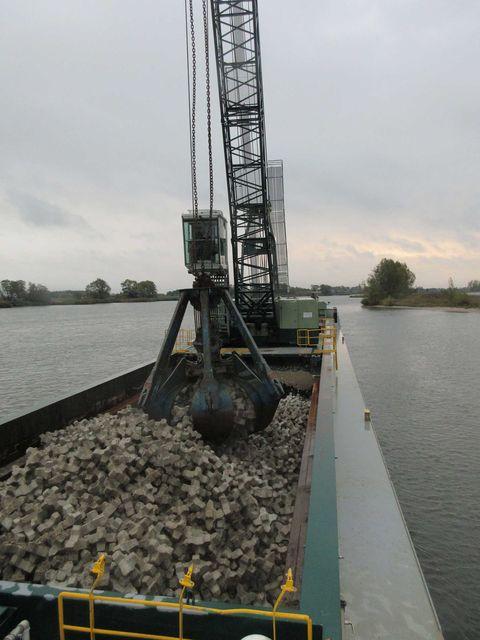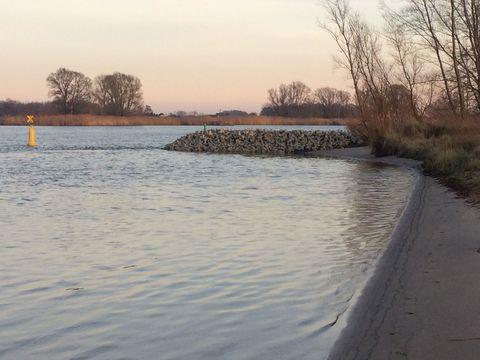












River groyne systems
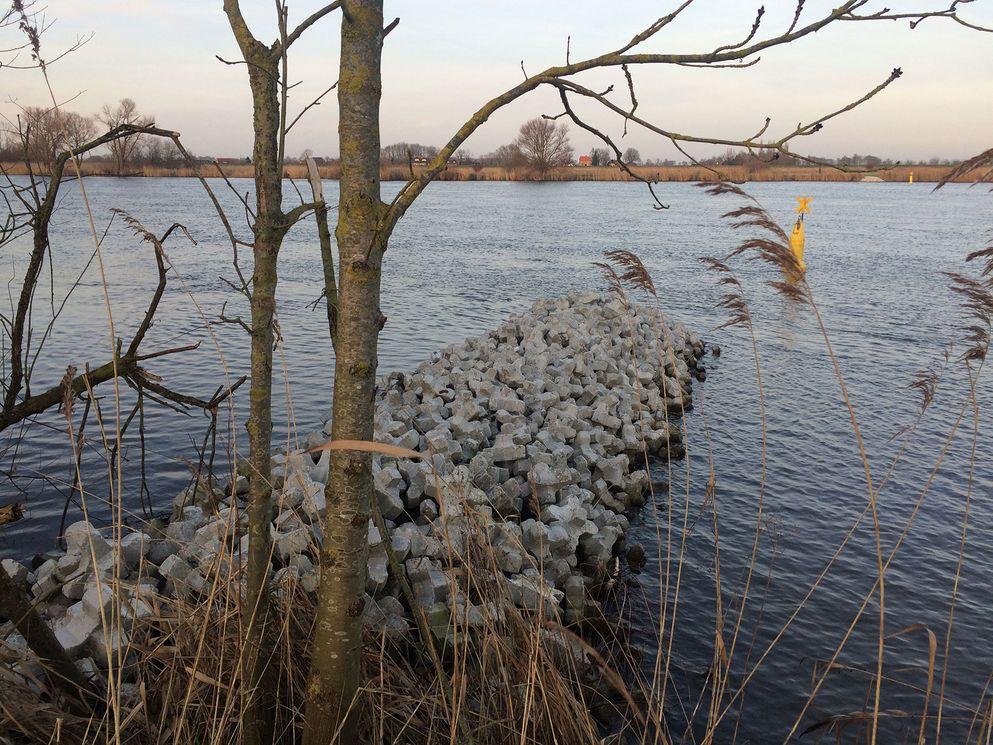
XStream blocks in River IJssel, The Netherlands
River groyne systems normally consist of a sand core which is protected by a filter structure consisting of various gravel layers covered by large rocks or blocks. A common problem of these structures is the scour hole formation around them due to river streams. This causes erosion and instability of the groyne and, as a result, decreased functionality and high maintenance costs.
For this context we designed the Xstream block - a smaller version of the Xbloc (30-40 cm high). These blocks can be produced in an industrial process which further decreases the total cost. Xstream blocks can be used for conventional groynes in rivers, lakes and canals. They can function as groynes, river guiding dams but also find application in shore or scour protection.
The main advantages of Xstream blocks are:
- Can be placed in bulk using a crane with a hydraulic grab;
- Can be transported in bulk using river barges;
- When placed in bulk, the structure has a high porosity of 60% limiting accretion and erosion around the groyne;
- Groynes or guide dams can be constructed solely of Xstream blocks, allowing to avoid joints and transitions;
- Since Xstream groynes are made solely of Xstream blocks, they are flexible and can be easily adapted to mitigate the effects of climate change.
The Xstream blocks can be made up of concrete, sand-cement mortar or with the use of low-Co2 binders. Recycled concrete aggregates can be used as well. The Xstream blocks are interlocking tightly. Therefore, steep slopes of up to 1:1 can be realized. Because of the steep slopes and the 60% porosity, material quantities are minimized.
The Xstream blocks can be placed directly on the river bed. If a flexible groyne is made only of Xstream blocks, it is able to adapt to emerging scour holes as a result of varying acceleration of currents at the groyne head. The groyne can be easily shortened or lengthened simply by removing or adding blocks. Also increasing or lowering the height of an Xstream groyne or dam is relatively quick and manageable. Due to the high interlocking capability, Xstream blocks can be placed in places characterized by high currents, for instance when building river guide dams.
An application of the flexible groyne system with Xstream lowers maintenance costs for the river system. Secondly, because of the high porosity, river discharge will partly pass through the Xstream groynes, limiting erosion and accretion compared to conventional groynes. This has a positive effect on the maintenance of the waterway and helps decrease CO2 emissions related to construction and maintenance works.
Because Xstream groynes or dams are porous and additionally able to absorb wave energy created by inland shipping they form an optimal habitat for aquatic life.

